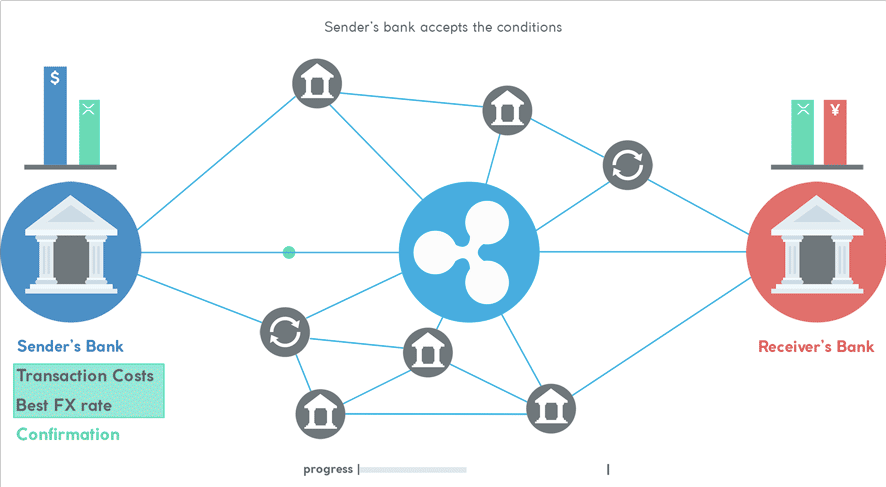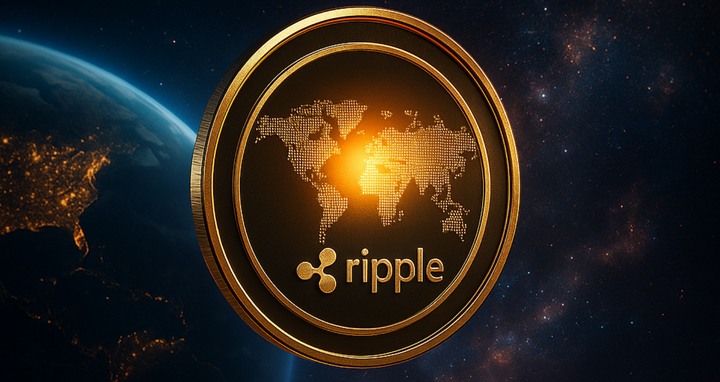Payment Wars: Why the 'Future of Money' Isn't a One-Coin Race

Circle just made headlines — again.
On April 29, 2025, Circle received "in-principle" approval from Abu Dhabi Global Market (ADGM) to operate as a money services provider.
News outlets are calling it a "huge step" toward global payment dominance.
But here's what they aren't telling you:
Approval doesn't mean superiority.
Infrastructure wins — not headlines.
Today, while everyone's watching the stage, the real race for the future of money is happening behind the scenes.
And it's not a winner-takes-all game.
It's a battle between open liquidity and controlled rails.
Ready to see who's actually building the future?
Let’s break it down. 👇
Circle CPN vs XRP — Not the Same Game
At first glance, Circle and XRP might seem like they’re playing the same role:
Moving money faster, across borders, with fewer fees.
But under the hood, they are building two very different systems — with very different endgames.
🔵 Circle CPN (Circle Payment Network)
Circle's Payment Network is centralized by design.
It connects regulated institutions using USDC — a stablecoin pegged to the U.S. dollar — for settlement across traditional rails and digital rails.
Sounds innovative?
It is — but it comes with heavy control mechanisms.
✅ Fast settlement
✅ Regulatory compliance baked in
✅ Institutional onboarding
❌ Requires permission to join and settle
❌ Operates under government frameworks
❌ Can freeze, restrict, or reverse transactions by design

"Fast, compliant, but permissioned. Every step must pass through approved checkpoints."
Now, let’s compare it to the old (and still undefeated) heavyweight:
⚡ XRP Ledger (XRPL)
The XRP Ledger was built for a completely different purpose:
- No central authority.
- Open access — anyone, anywhere, can transact.
- Instant settlement — typically 3-5 seconds across borders.
- Native bridge currency (XRP) — no need for an intermediary stablecoin.
✅ Decentralized infrastructure
✅ No middlemen approvals
✅ Global liquidity bridging any currency to any other currency
❌ Not designed for government custody or backdoor control
❌ Doesn't depend on "permission to participate"

"Bridge currencies without permission. Move value freely across any network."
🧠 Bottom Line: Two Very Different Paths
Circle is building gated highways.
XRP is building open bridges.
Both systems are gaining traction — but only one aligns with the original promise of crypto:
Borderless, permissionless value movement.
And that distinction will define who controls money in the future — and who doesn’t.
Other Major Players in the Payment Race
While Circle and XRP are drawing a lot of attention, they’re not the only ones building the future rails.
Other key players are quietly laying down critical pieces of the global payment infrastructure — and each one has a different strategy:
✴️ Stellar (XLM)
- Mission: Financial access for all — especially underserved populations.
- Focus: Cross-border microtransactions, remittances, and small-business settlements.
- Style: Lightweight, simple, retail-friendly.
✅ Super low fees (fractions of a cent)
✅ Fast settlement (2–5 seconds)
✅ Designed to connect people outside of traditional banking systems
❌ Smaller institutional adoption compared to XRP
❌ Focused more on people-to-people payments than institution-to-institution highways
Core Insight:
Stellar is building bridges for the everyday person — not for megabanks.
✴️ Algorand (ALGO)
- Mission: A high-speed, highly scalable, government-friendly blockchain.
- Focus: Central bank digital currencies (CBDCs) and regulated stablecoins.
- Style: Blend of decentralization and compliance.
✅ Near-instant finality (transactions settle in seconds)
✅ Partnered with multiple national governments for CBDC pilots
✅ Highly energy-efficient (pure proof-of-stake)
❌ Leans heavily into permissioned projects — CBDCs could limit freedom of movement
❌ Less "open system" idealism, more "regulated future" pragmatism
Core Insight:
Algorand is building the backend for governments — not a freedom-based system.
✴️ Quant (QNT)
- Mission: Connect all payment networks — regardless of blockchain or legacy status.
- Focus: API layers that allow CBDCs, stablecoins, banks, and crypto to work together.
- Style: The invisible middleware.
✅ Works across multiple chains — and between blockchain and banking systems
✅ SWIFT partnership integrations
✅ Positioned as the "enterprise connector" for future finance
❌ Highly centralized by design (for compliance and security)
❌ Built for institutions first — retail investors are secondary
Core Insight:
Quant doesn’t replace the old system — it stitches the old and new systems together.
Mini-Table: Payment Solutions at a Glance
| Project | Target | Approach | Openness |
|---|---|---|---|
| Circle CPN | Institutions | Stablecoin settlement | Permissioned |
| XRP | Global liquidity | Native bridge asset | Open |
| Stellar | Retail, remittances | Microtransactions | Open |
| Algorand | Governments | CBDCs and stablecoins | Semi-permissioned |
| Quant | Infrastructure APIs | Connecting all systems | Centralized |
Hidden Danger — "Permissioned Rails" Trap
Most investors today are trained to ask:
"Which coin will go up the most?"
That’s the wrong question.
The right question is:
"Who controls the rails — and who controls access?"
Because here’s the uncomfortable truth:
In the new system being built, moving money will still be possible —
but only if you're allowed to.
🛤️ What Are "Permissioned Rails"?
In old-school banking, if your account got flagged, frozen, or rejected — you were stuck.
No appeal. No negotiation.
Permissioned blockchain systems are building the same model — just faster and digital.
- Want to move funds? You’ll need approval.
- Want to transact internationally? You’ll need clearance.
- Want to opt out? Good luck.
You’re not free if you need permission to move your own money.
🔒 Who’s Building Permissioned Rails?
- Circle CPN
- CBDC projects (built on chains like Algorand)
- Banking consortiums leveraging Quant APIs
Their Goal:
Efficiency + control.
Their Risk:
Freedom traded for convenience.
🕊️ Who’s Still Building Open Rails?
- XRP Ledger
- Stellar Network
Their Goal:
Permissionless movement of value.
Their Risk:
Resistance from regulators who fear loss of control.
🧠 Crypwealthy Core Insight:
"The payment wars aren’t about speed.
They’re about sovereignty."
In a world where "approved" money flows smoothly but "unapproved" flows get blocked,
open liquidity is the only real freedom left.
The coins that preserve open liquidity will not always be the ones with the flashiest partnerships —
but they will be the foundation for real financial independence.
Conclusion: Choose Your Rails Wisely
The future of payments isn’t about who’s fastest.
It’s not about who partners with the most banks.
And it’s definitely not about who gets the biggest headlines.
It’s about who controls the settlement rails —
and whether those rails set you free or lock you in.
If you pick projects blindly, chasing hype or big news...
you might end up locked inside a system that controls when, where, and how you move your own money.
If you pick with clarity — by understanding infrastructure, control, and freedom —
you position yourself to still move freely when the walls start closing in.
The real battle isn't one coin vs another.
It's freedom vs permission.
Choose wisely.
The payment wars have already started.
🧠 Want more?
Join Crypwealthy Plus for deep dives into XRP, Stellar, Algorand, and Quant — and understand the future before it happens.
🔗 Upgrade here.



Comments ()